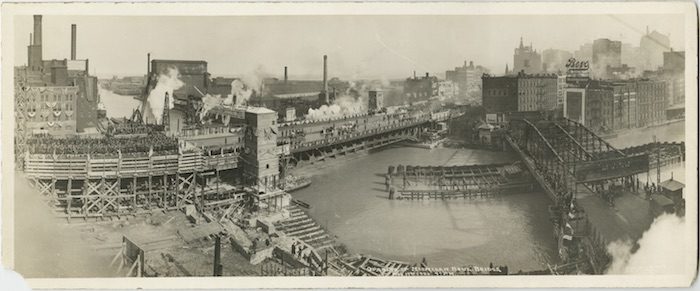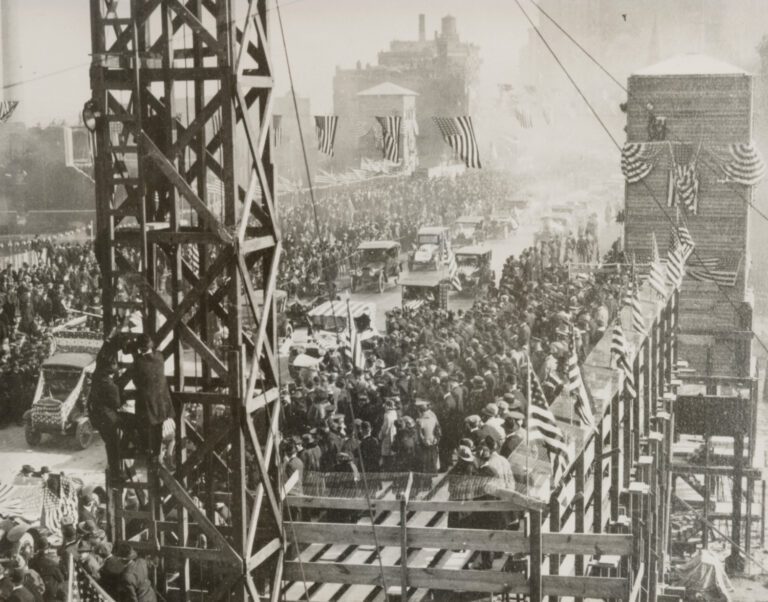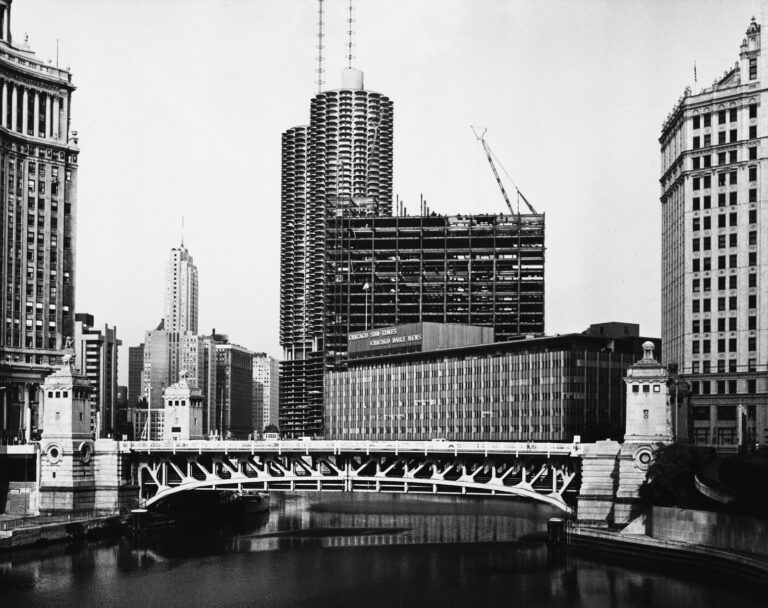
Panorama of the Michigan Avenue bridge during its opening-day parade and celebration, Chicago, May 14, 1920. CHM, ICHi-000144
At 4:00 p.m. on the sunny afternoon of May 14, 1920, a cowboy hat-wearing mayor William Hale “Big Bill” Thompson cut the ribbon to open the upper level of the new Michigan Avenue bridge. Fireworks were shot into the sky, planes dropped booster literature, boats in the river sounded their whistles, and a band played “The Star-Spangled Banner.” During the festivities, workers on the trunnion bascule bridge’s uncompleted lower level remained busily on the job.

Opening of Michigan Avenue Bridge, Chicago, May 14, 1920. CHM, ICHi-029306; J. Sherwin Murphy, photographer
Since then, the bridge has become a frequently-used roadway and has evolved into the structure that you see today. Bas-relief sculptures depicting scenes from Chicago’s early history were installed in 1928. The bridge is considered a structure of primary significance in the Michigan–Wacker Historic District, which was listed as on the National Register of Historic Places in 1978. It was designated a Chicago Landmark in 1991, and in 2010, it was officially renamed the DuSable Bridge in honor of Chicago’s first permanent resident, Jean Baptiste Point DuSable, whose homesite is next to the north end of the bridge.

View of the Michigan Avenue Bridge over the Chicago River, July 20, 1970. The Marina Towers are visible. The IBM building is under construction. CHM, ICHi-068313; Betty Hulett, photographer
The Michigan Avenue bridge was first conceptualized in Daniel H. Burnham’s Plan of Chicago, one of the most noted documents in the history of city planning. Connecting Michigan Avenue with the section north of the river (then called Pine Street) was an extremely complicated proposition, and not only from a design and engineering standpoint. Implementation required the approval of different city authorities, condemnation of various properties next to it, and appropriate legislation. Learn more about Burnham’s vision for reshaping the city and how Michigan Avenue fit into it.
You can see photographs from our collection in the Magnificent Mile Association‘s video celebrating the 100th anniversary of the bridge’s opening day.